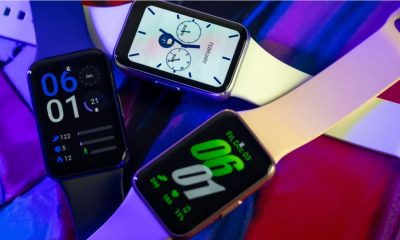Technology
Artificial intelligence has the ability to crush humans like flies!
Published
11 months agoon


Artificial intelligence has the ability to crush humans like flies! Another former Google executive warned about the dangers of artificial intelligence and said that this technology in the future may consider humanity as a worthless creature and even control military drones to destroy us.
Artificial intelligence has the ability to crush humans like flies!
Mo Gawdat, the former chief commercial officer at Google’s secret R&D X department, believes that artificial intelligence has the power to either love humans or squish them like flies.
Judet is the second employee of the search giant to warn about the power of artificial intelligence in recent weeks, following the resignation of AI godfather Geoffrey Hinton and his dire warnings about the future of artificial intelligence.
Read More: Is Your Phone Screen Jumping or Flickering?
Judet noted that at Google’s R&D X, he considered AI as his child but now regrets being a parent. Judet said: I have lived among those machines and I know how smart they are. I wish I had not started making them.
Judet hopes that while there’s still time, the public will stay focused on what can be done to prevent a future disaster.
He warned that today’s language learning models that train artificial intelligence only allow machines to learn about the human race from the mess we’ve made online. In this chaotic environment, robots are likely to see only the worst that humanity has to offer. He added: The problem is negative bias. All the villains are in the headlines. Also, they are the ones who spend more time and effort on power.
Any intelligent AI trained in the controversial and violent culture of online content would view our species as evil and a threat. “If you’re asking how likely it is that AI will find us worthless today, I’d say it’s very likely,” Judet said. Now that ChatGPT is upon us, although it’s not really the main topic, everyone has woken up and is saying: Panic! Panic! Let’s do something about it.
Judet noted that by focusing on apocalyptic scenarios of the distant future, humanity may be failing tremendously to address issues that can be changed now and to ensure a more harmonious future of our inevitable partnership with artificial intelligence.
He added: Humanity is what decides to create bigger and better data centers, allocate more power to machines, and finally riot and protest in the streets due to losing their jobs in competition with artificial intelligence. These are human actions and it is humanity that is considered a threat.
Judet believes that AI will soon have the agency to create killing machines, but only because humans are creating killing machines.


You may like
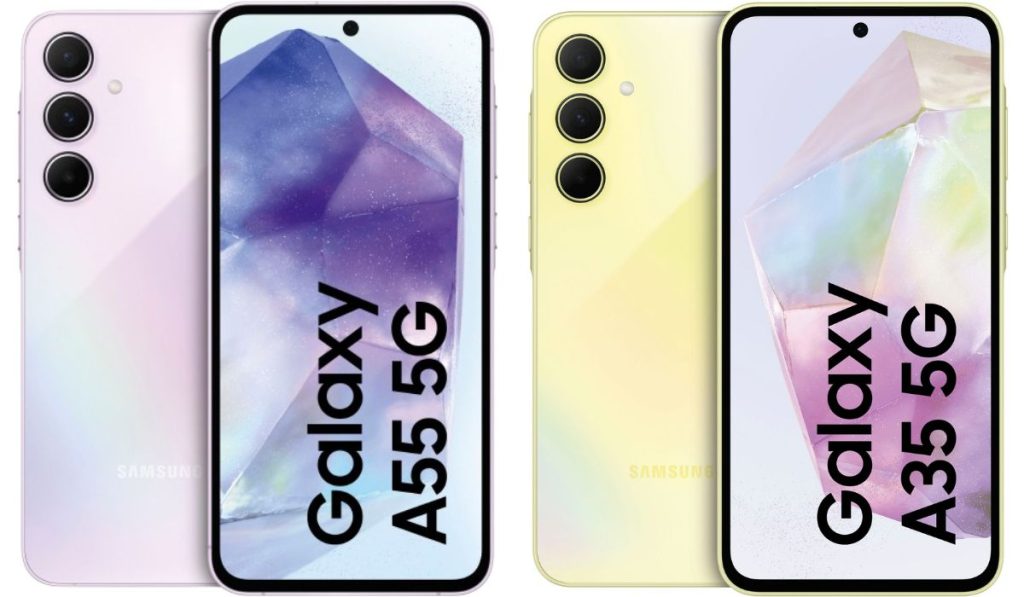

With the launch of the Galaxy A55 5G and A35 5G phones, both of which are among the mid-range products of this company, we saw many improvements compared to the previous versions.
Samsung Galaxy A55 vs Galaxy A35
Samsung’s mid-range products are improving every year. Now, with the release of Galaxy A55 5G and A35 5G, both of which are among the mid-range products of this company, we saw many improvements compared to the previous versions. In this article, we are going to compare A55 and A35 phones. These two phones are very similar in terms of appearance, but in other parts, there are differences in these two phones, each of which can be very important for users. Stay with us until the end of the Samsung A55 and A35 phone comparison.
As mentioned, it’s hard to tell the difference between the two phones based on their specs. However, we see that when comparing more closely, their differences become more prominent.


Comparison of the video of Samsung A55 and A35
The mid-range Samsung Galaxy A55 and A35 phones have been made available to us by the ” Technolife ” online store. Teknolife is one of the largest collections of smartphones, wearable gadgets, and other electronic devices. To get more information about Technolife’s product portfolio, enter the website of this online store.
Specifications
| phone name | Galaxy A55 | Galaxy A35 |
| Display | 6.6-inch OLD with a resolution of 1080 x 2340 pixels and a variable refresh rate of 120 Hz / maximum brightness of 1000 nits | 6.6-inch Super AMOLED with a resolution of 1080 x 2340 pixels and a variable refresh rate of 120 Hz / maximum brightness of 1000 nits |
| chipset | Exynos 1480 (4nm) | Exynos 1380 (5nm) |
| RAM memory | 8 or 12 GB | 6, 8 or 12 GB |
| internal memory | 128 or 256 GB | 128 or 256 GB |
| Operating system (at the time of release) | Android 14 and One UI 6.1 skin | Android 14 and One UI 6.1 skin |
| Main camera | The triple camera includes a 50-megapixel main camera, a 12-megapixel ultra-wide camera, and a 5-megapixel macro camera. | The triple camera includes a 50-megapixel main camera, an 8-megapixel ultra-wide camera, and a 5-megapixel macro camera. |
| selfie camera | 32 megapixels | 16 megapixels |
| battery | 5000 mAh | 5000 mAh |
| Charging technology | Wired 25 watts | Wired 25 watts |
| Weight | 213 grams | 209 grams |
| body | Glass back frame/aluminum frame / protective glass Gorilla Glass Victus + for the display / IP67 standard to resist the penetration of dust and splashing water drops | Glass back frame/aluminum frame / protective glass Gorilla Glass Victus + for the display / IP67 standard to resist the penetration of dust and splashing water drops |
Design and display
Both Galaxy A55 5G and Galaxy A35 5G use the design language of Galaxy S24. It is for this reason that these two models are very similar in appearance. However, last year we saw that Samsung’s mid-range to flagship phones were all similar in terms of design, and the difference was seen in the hardware and build quality.
The Galaxy A55 5G uses metal and Gorilla Glass Victus+, which is an excellent specification for a mid-range device. The A35 also has a glass back frame without Gorilla Glass protection and a plastic frame. The most obvious difference between these two phones in terms of design and build quality is related to the material of their frames, which we see in the bigger brother, the A55, which this year has used a brushed aluminum frame.
Continuing the comparison of A55 and A35, we should mention that in terms of size, both are almost similar. The Galaxy A55 5G is slightly slimmer and lighter. The Galaxy A35 5G is about 4 grams heavier, but the difference is barely noticeable.


Both phones have IP67 water and dust resistance. This means that both phones are equally resistant to dust and water. Admittedly, that’s a step down from the IP68 certification found on many Samsung phones, but in the phone category, it doesn’t matter much if you can drop the phone deeper.
Regarding the port and buttons, we should mention that a new curve can be seen on the right side of the phones. This new design on the right edge of these two phones makes it easier to recognize the location of the buttons during use. In addition, it has helped to make the phone comfortable. Above this section, there are power buttons and volume buttons. There is also a USB Type-C port on the bottom edge that you can use to charge phones using the cable in the box. Of course, don’t expect that there is any charge inside the box. In recent years, Samsung has generally removed the charger from its product box and only offers a charging cable.
Galaxy A35 5G and Galaxy A55 5G both have 6.6-inch screens and in terms of screen dimensions, both are slightly larger than last year’s version. This is for those who are interested in bigger phones; It is good news. Although the difference compared to last year is only 0.2 inches, this change has made both of these phones feel more premium to the user.
The rest of the display specifications are very close. Each earphone was equipped with Super AMOLED screens and a maximum refresh rate of 120Hz, which provide a very smooth and smooth experience in the user interface and playing games.


Performance and software
Both the Galaxy A55 5G and Galaxy A35 5G are based on Samsung’s mid-range Exynos chips. These two models use Exynos 1480 and Exynos 1380 chips respectively. Considering the history of Gegenios chips and the fact that these chips are mid-range anyway, they should not be compared with the new versions of Snapdragon.
With mid-range Exynos chips in last year’s Galaxy A54 and Galaxy A34, they provided average and acceptable performance. The Galaxy A54 came with the same Exynos 1380 and now the same chip is used in the A35.


Predictably, the Galaxy A55 5G beats the Galaxy A35 due to its faster Exynos chip. According to various benchmark tests, the Galaxy A55 outperforms the Galaxy A35 in both GeekBench 6 and 3DMark. This means that Samsung’s new mid-range chip has improved performance compared to last year’s version.
| phone name | Antutu 9 | GeekBench 5 Multi-Core |
PCMark Work 3.0 |
3DMark WL Unlimited |
3DMark WLE Unlimited |
| Galaxy A55 | 635598 | 3352 | 13208 | 3905 | 1034 |
| Galaxy A35 | 522829 | 2742 | 12545 | 2797 | 892 |
As for memory and storage, both devices are available in three versions. You can get the Galaxy A55 5G with 8GB of RAM and 128GB or 256GB of storage. The Galaxy A35 5G comes with 128GB of storage and either 6GB or 8GB of RAM, although a 256GB version with 8GB of RAM is also available for purchase.
Both of these phones came with Android 14 and One UI 6.1 and get up to 4 years of Android updates and 5 years of security updates.
Read More: Samsung Galaxy A55 vs Galaxy S23 FE
Comparison of A55 and A35 phones in the camera department
Both the A55 5G and Galaxy A35 5G have triple cameras, but you’ll be using two of those lenses roughly 99% of the time. Why? Because the third lens is for macro photography. Samsung has been using this macro lens in its phones for several years. Although many users don’t use this lens, the company has decided to stick with it instead of using an efficient telephoto lens. We hope to see this change in mid-range phones in next year’s models.


In terms of specifications, the main difference is in the ultra-wide megapixels of the Derby. The Galaxy A55 5G comes with a 50-megapixel main camera and a 12-megapixel ultra-wide camera; While the Galaxy A35 5G is equipped with a 50-megapixel main camera and an 8-megapixel ultra-wide camera. Both phones also have the same 5-megapixel macro camera as mentioned. The main camera of this phone is the same. So most of the photos you’ll take in this mode are similar, but the A55’s ultra-wide shots are better. However, the difference is not so great.
On the front, the Galaxy A55 5G has a 32-megapixel selfie camera. In contrast, the Galaxy A35 5G has a 13-megapixel selfie camera. In terms of quality, the Galaxy A55 5G performs better, but the difference between the photos is not much at first glance. In the portrait mode, the separation of the subject from the background is better in A55. In contrast, the photos of A35 in portrait mode look a little artificial.
Main camera
In terms of quality, we can’t see any major differences between the Galaxy A55 and the Galaxy A35.


Ultra-wide camera

Night photography


The zoom capability of the camera on both devices is not very good, so it is recommended to do zoom photography only when necessary. Otherwise, you may be disappointed with the result. Although 2X digital zoom is suitable for photography, but when you increase the zoom value, the quality of the photos will drop drastically.


Speaker and fingerprint sensor
In terms of sound quality, the A54 and Galaxy A34 weren’t flawless, but both the Galaxy A55 5G and Galaxy A35 5G nailed many of the issues. The Galaxy A55 5G has slightly better sound quality than the Galaxy A35, but the difference is very small and you can tell the difference after listening to the same sound several times. But the sound of A55 is a little louder than A35.
The fingerprint sensor is not the best in any of the phones, but the result is satisfactory. The speed of fingerprint recognition in the A55 phone is half a second faster than the cheaper model.
Battery life and charging
Both phones have 5,000 mAh batteries, which is a standard battery capacity. Of course, the A55 and the Galaxy A35 5G are different in terms of performance due to the difference in the processor, and the A55 has a better performance in this field.
According to the PCMark benchmark that we took to measure the battery life of these phones, the A55 recorded half an hour more screen time. However, this half hour may not be felt in real and daily use.
Conclusion
In this article, we compared A55 and A35 phones. As you have seen in different parts of this article, the biggest difference between these two phones is their frame and camera performance. Although A55 has a more powerful chip, it does not make a difference in the user interface experience. Both of these phones can handle popular games well. The aluminum frame of the A55 phone is one of the advantages of this phone, which can be very important for users. Due to the price difference, these two phones do not show special performance in the A55 model, although, in the video recording department, the A55 phone provides better output due to having a much better stabilizer.
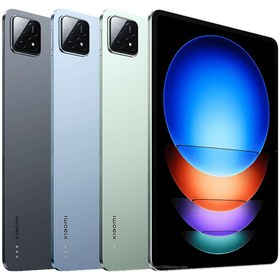

Xiaomi Pad 6S Pro review, economical iPad Pro
Tablets are the strangest gadgets in the world. At first glance, every user, seeing a well-made tablet, imagines that he must have one of them. A set of high-quality hardware in addition to an attractive form that is not as small as a mobile phone, which cannot be used for serious work, and does not restrict movement as much as laptops. It seems that such a device if it has a modern and appropriate design, can become an extremely useful tool that will significantly increase the level of your ability to produce content.
Laptops can have the same hardware as a powerful home computer. But they offer this power in a portable form, and for that reason, they are gadgets that are hard to replace. To solve the challenges of working with mobile phones, laptops provide the user with a much larger screen, physical keyboard, multiple ports, and extensive communication capabilities, and they handle complex and heavy tasks well; Whether you are a professional programmer, a video editor or a gamer.
Finding a place between smartphones and laptops is the most difficult task for a tablet
As a result, tablets have to prove themselves in a space that is well covered by mobile phones on the one hand and laptops on the other hand. For this reason, many users do not consider buying a tablet a good choice. But definitely, for every user, there has been a time when he feels that neither a mobile phone nor a laptop can do a certain task in the best way, and a tablet is the best option to do that task.
Of course, the “special work” of each user can be different depending on the job or hobby of each person. You may be a professional reader who has decided to buy e-books instead of paper books; Or the mobile gamer who feels that the dimensions of the phone cannot develop all his talents in Call of Duty Mobile and needs a device with a larger screen for this. Or an employee who spends a large part of his daily activity reading e-mails, managing the flow of projects, and participating in video conferences, and needs a more specialized device than a phone, but more portable than a laptop to do these things.
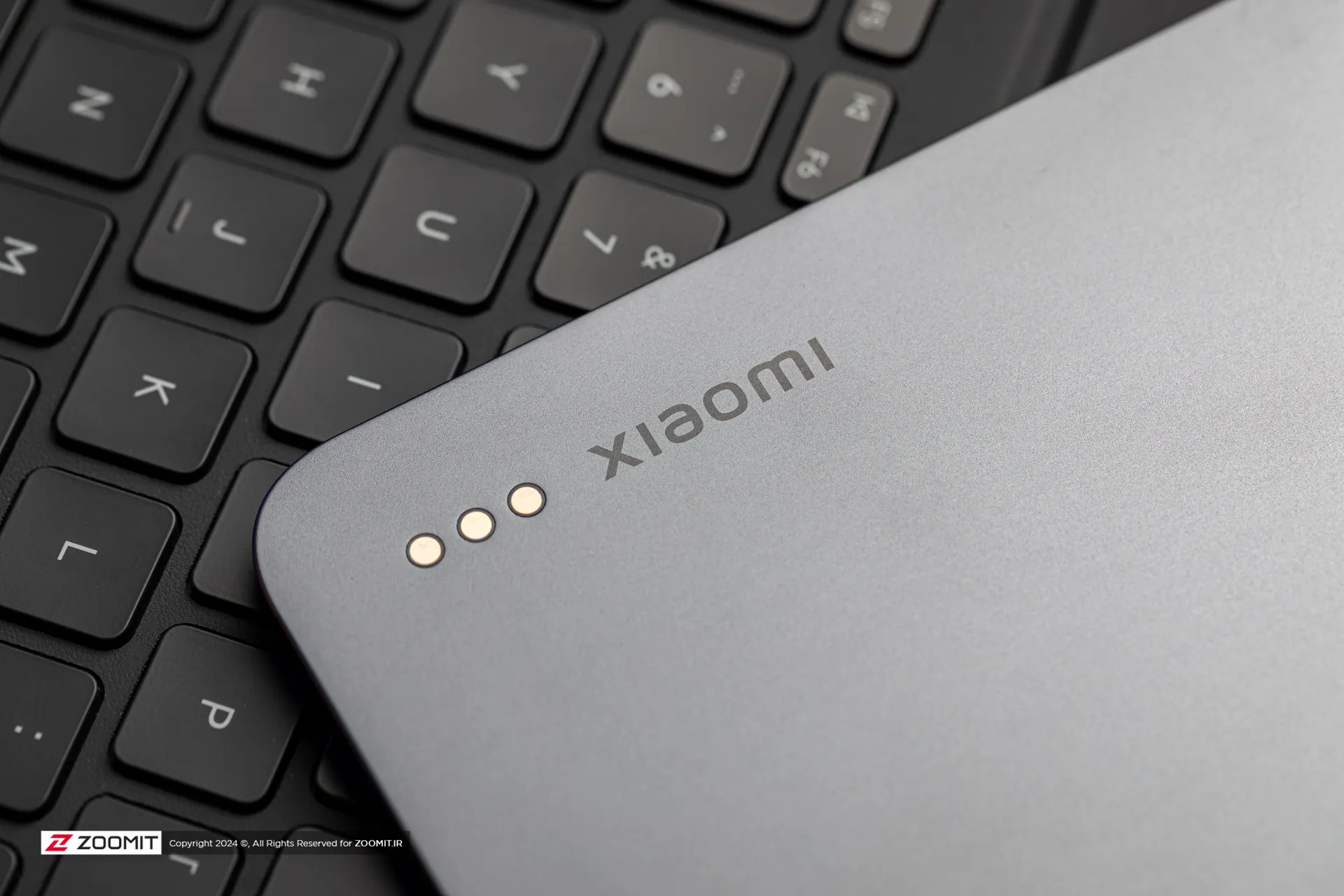
But as much as iPads are successful in filling this technological gap, Android tablets are not welcomed by users. According to the latest statistics, in February 2024, Apple had more than 54% of the tablet market, followed by Samsung with 27% and Amazon with 3%. This statistic clearly shows that many users believe that “an Android tablet is just an Android phone with bigger dimensions”.
Is an Android tablet more than just a large Android phone?
Samsung has been trying to erase this notion from the minds of users for years. Whether he has succeeded in doing such a thing or not is a matter that should be addressed separately. But gradually, another name appears in the campaign to challenge iPads, more prominently than before: Xiaomi.
2023 was a relatively busy year for the Xiaomi tablet unit. Xiaomi Pad 6, Xiaomi Pad SE, Xiaomi Pad 6 Pro, and Xiaomi Pad 6 Max were the tablets that were introduced by the Chinese company and now it is time for the first model of 2024. The Xiaomi Pad 6S Pro is a device introduced to compete with the iPad Air 2022 and the Galaxy Tab S9 FE and aims to show that Android tablets are much more useful than you might think.
|
List of hardware specifications of Xiaomi Pad 6S Pro |
|
|---|---|
|
Specifications |
Description |
|
Dimensions (mm) |
287.7 x 191.6 x 6.3 |
|
weight (gram) |
590 |
|
Display dimensions |
12.4 inches with a 3:2 aspect ratio |
|
Display technology |
IPS LCD – supports 68 billion colors 144 Hz refresh rate Maximum brightness of 900 nits |
|
chipset |
Snapdragon 8 Generation 2 |
|
RAM and storage space |
256GB 8GB RAM, 256GB 12GB RAM 512GB 12GB RAM, 1TB 16GB RAM |
|
Main camera |
50 megapixels f/1.8, 1/2.76-inch sensor |
|
filming |
4K@30/60fps 1080p@30/60fps |
|
selfie camera |
32 megapixels |
|
Battery capacity |
10000 mAh |
|
fast charging |
120 watts (0 to 100 in 35 minutes) |
The iPad of the Chinese
Although Samsung and Apple tablets share many similarities, the Xiaomi Pad 6S Pro bears an undeniable resemblance to the iPad Pro. The aluminum body and frame with low bezels around the display and perhaps most importantly, the square-shaped camera island on the back of the device are undoubtedly reminiscent of the iPad Pro. Of course, considering Apple’s very high share of the tablet market, Xiaomi seems to have made the right decision regarding the design inspiration of the 6S Pro pad from iPads.

You probably also agree that years of using smartphones with glass bodies have made us forget the feeling of holding aluminum gadgets. But as soon as you hold the pad of the 6S Pro, the memories of the past come alive and you can again experience the pleasant feeling of touching a body with cold metal.
Revisiting the aluminum body is really enjoyable!
Xiaomi Pad 6S Pro has a thickness of 6.3 mm, which is almost equal to the thickness of the iPad Air 6.1 mm and Galaxy Tab S9 FE 6.5 mm (as its price competitors in the Iranian market). However, the weight of the Xiaomi tablet is significantly more than the competitors. Where the scales tip, the 590g Pad 6S Pro is almost 130g heavier than the iPad Air and 67g heavier than the Galaxy Tab S9 FE.
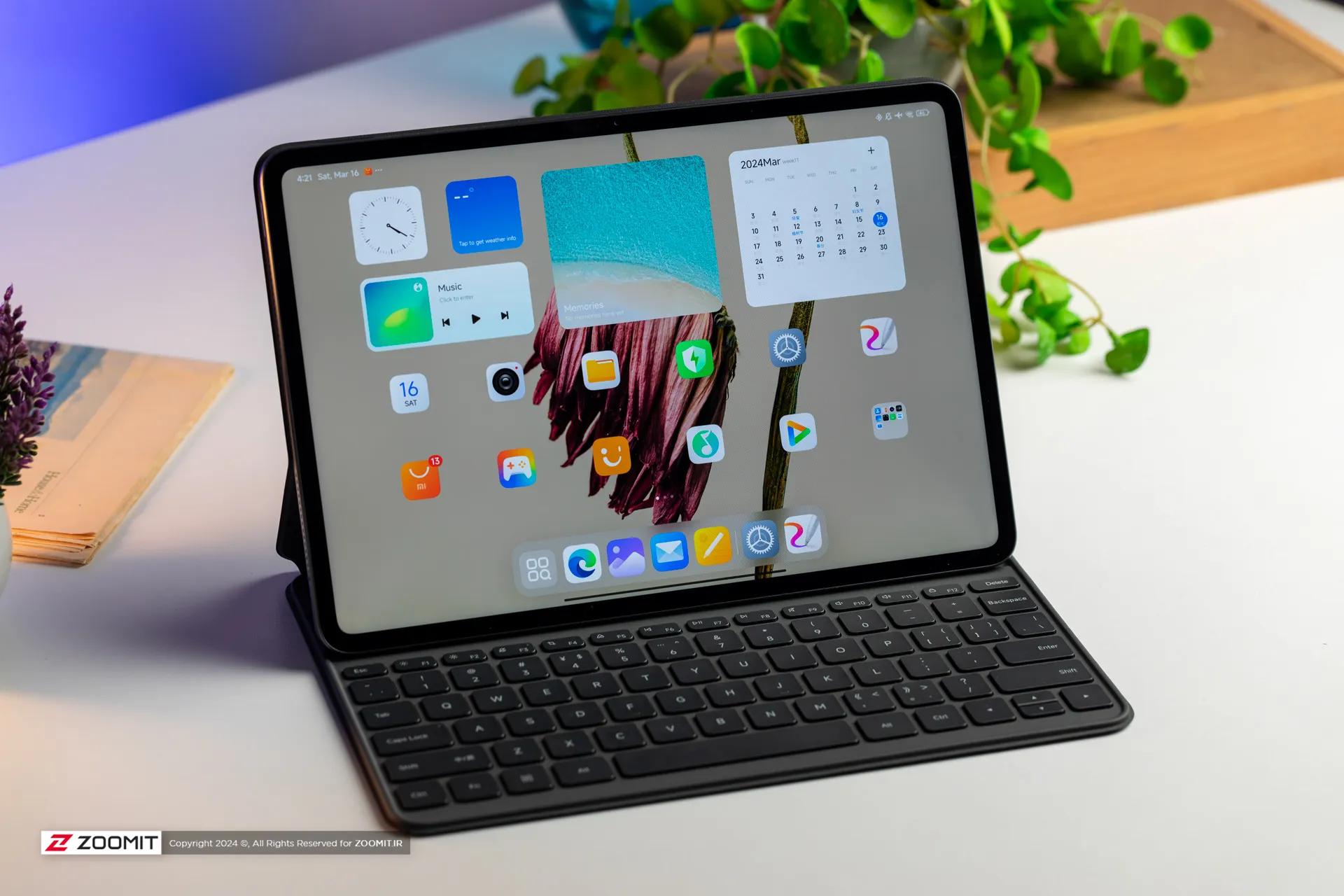
Although this number is by no means negligible, you should not forget that both Apple and Samsung tablets are 10.9 inches (against the 12.4-inch screen of the Xiaomi tablet). However, in the world of tablets and according to the size and model of the use of these gadgets, the weight is higher, much more than 1.5 inches, and the screen is bigger. The result of this greater weight is faster hand fatigue during work and the greater tendency of the user to place the tablet on a surface such as a table.
Borrowing from Apple’s design can be seen even in the location of the device’s physical keys. You can find the volume keys on the top right edge of the tablet, and the power key is located on the right corner of the top edge of the device, just like the iPad Air. As expected, this key also plays the role of a fingerprint sensor.

Around the body, you can also see a set of 6 stereo speakers of Xiaomi Pad 6S Pro. This set not only helps produce loud and clear sound in different audio frequencies but also supports Dolby Atmos, giving you a better experience while watching movies and video conferences. Of course, there are probably very few users who still prefer to hear the sound of the movie through the tablet speakers instead of using Bluetooth hands-free! Also, there is no news about the 3.5 mm headphone jack.
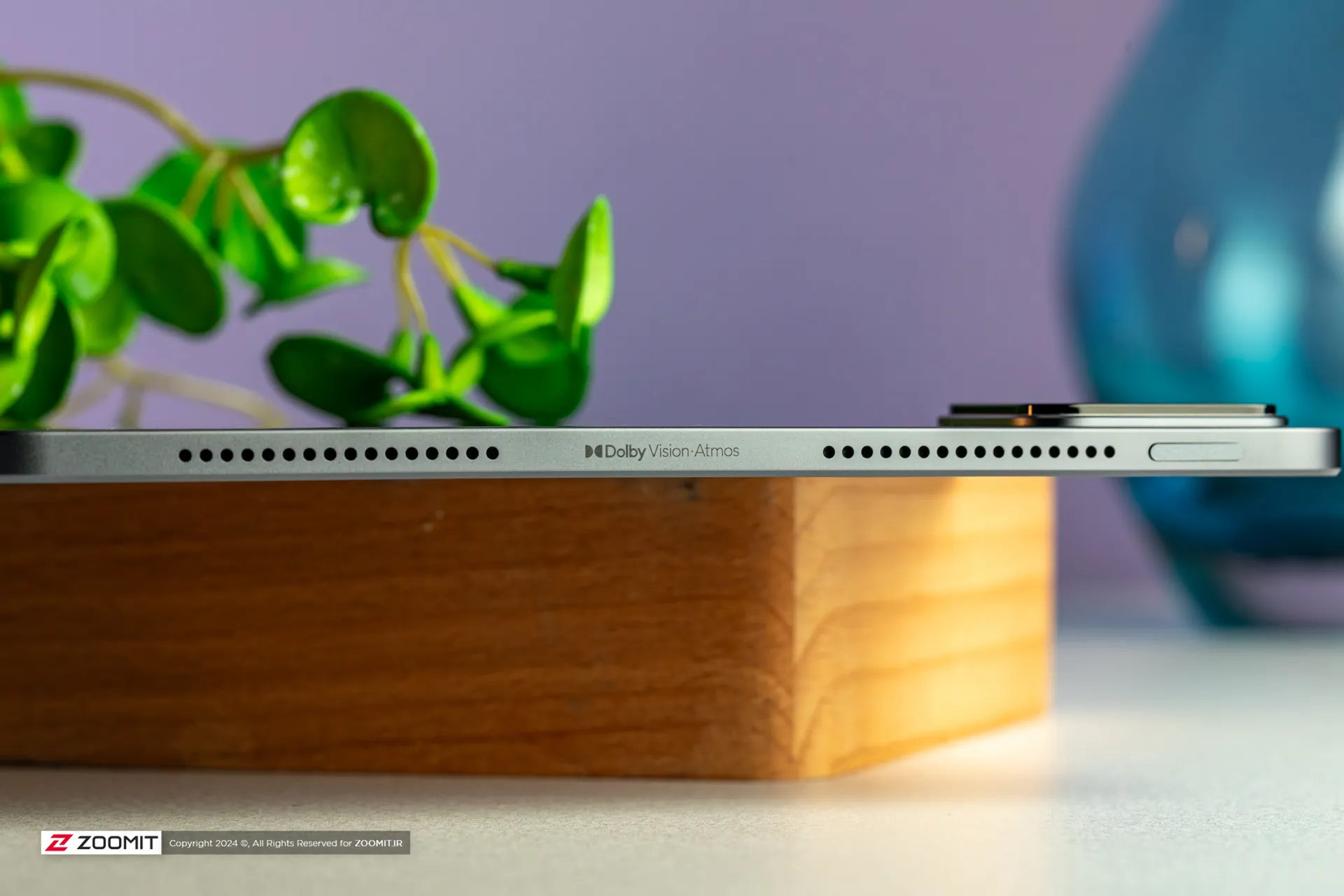
More than 85% of the device’s front view is covered by its 12.4-inch screen. The screen-to-body ratio in the Xiaomi Pad 6S Pro is almost 4% higher than the same figure in the iPad Air and Galaxy Tab S9 FE, and Xiaomi should be given credit for its effort in reducing the screen margins. Of course, this issue can be looked at from a different angle.

When you hold a tablet in your hand, you need space around the screen to place your fingers. This procedure is unlike smartphones, in which mainly the hand that is behind and the finger that is placed under the phone are also responsible for protecting it. As a result, reducing the bezels around the screen of a tablet too much is probably not a very good decision. However, Xiaomi has decided to take a little risk and move a few more steps towards the limit and ultimate convenience of using a tablet.
Perhaps the use of a relatively high-quality screen has made Xiaomi accept the risk of reducing the margins around it in order to expose the screen in the best way to the users. The screen of Xiaomi Pad 6S Pro is IPS LCD type with 3K resolution, the maximum announced brightness is 900 nits and the refresh rate is 144 Hz, which is much higher than the 60 and 90 Hz screens of Apple and Samsung.
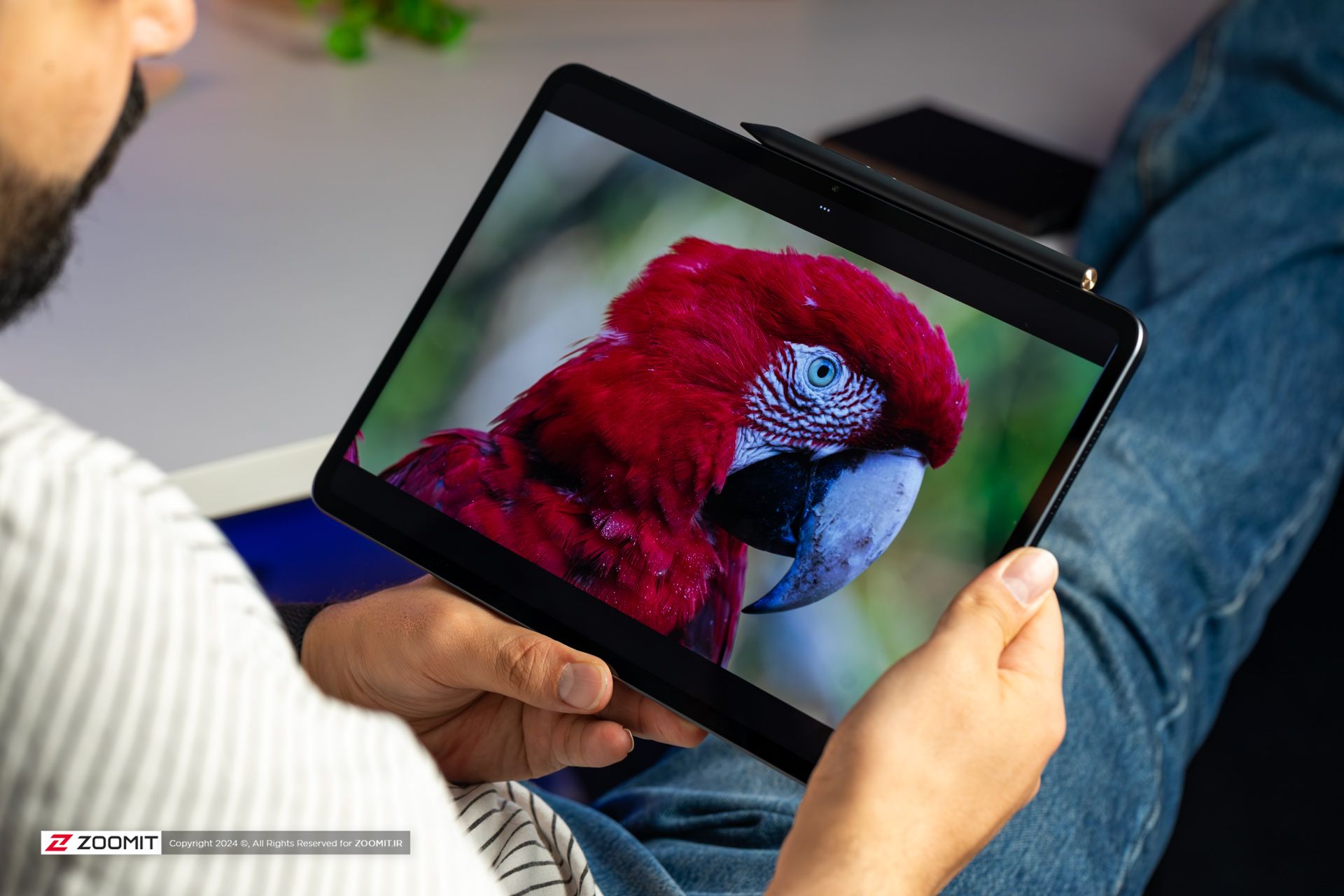

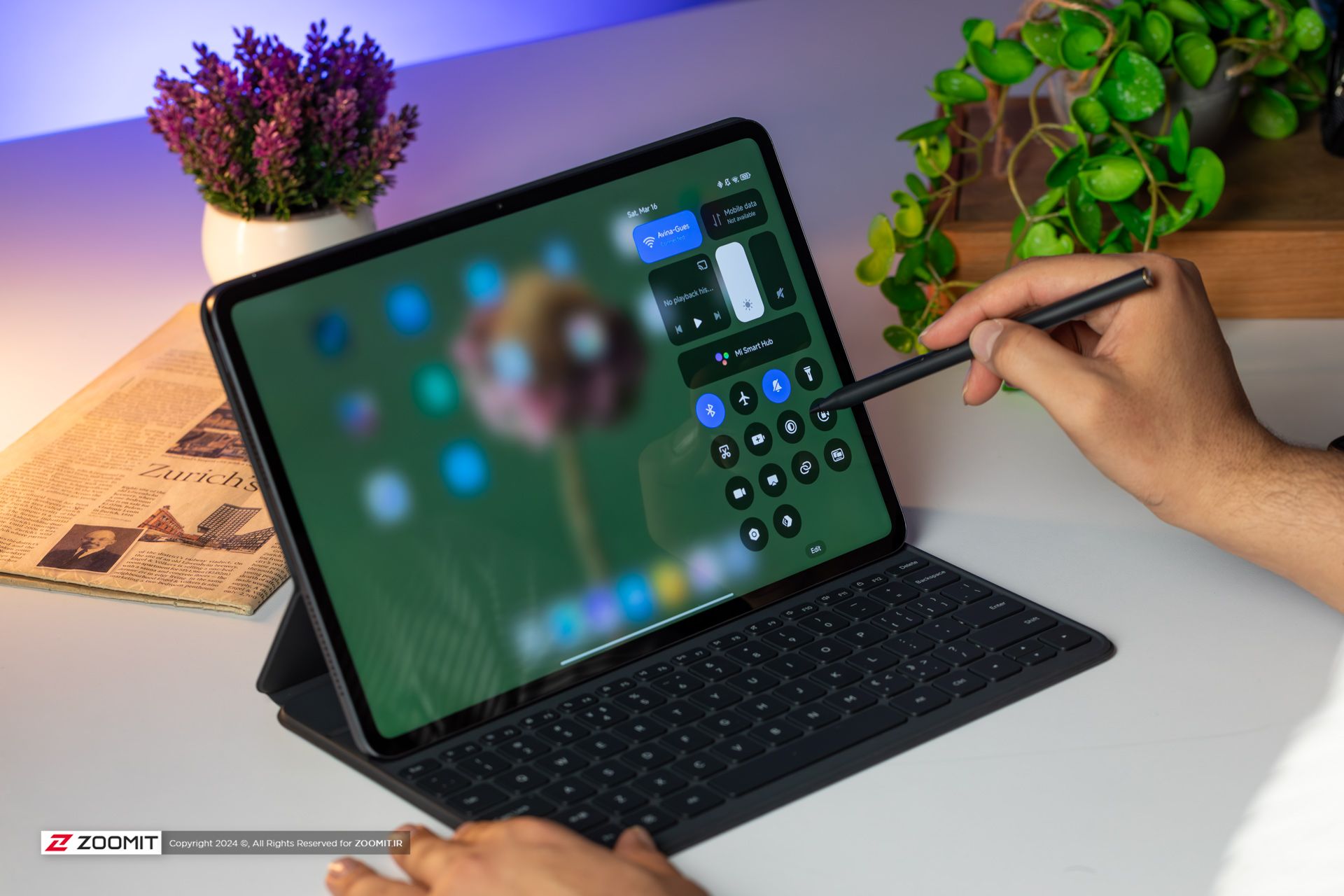
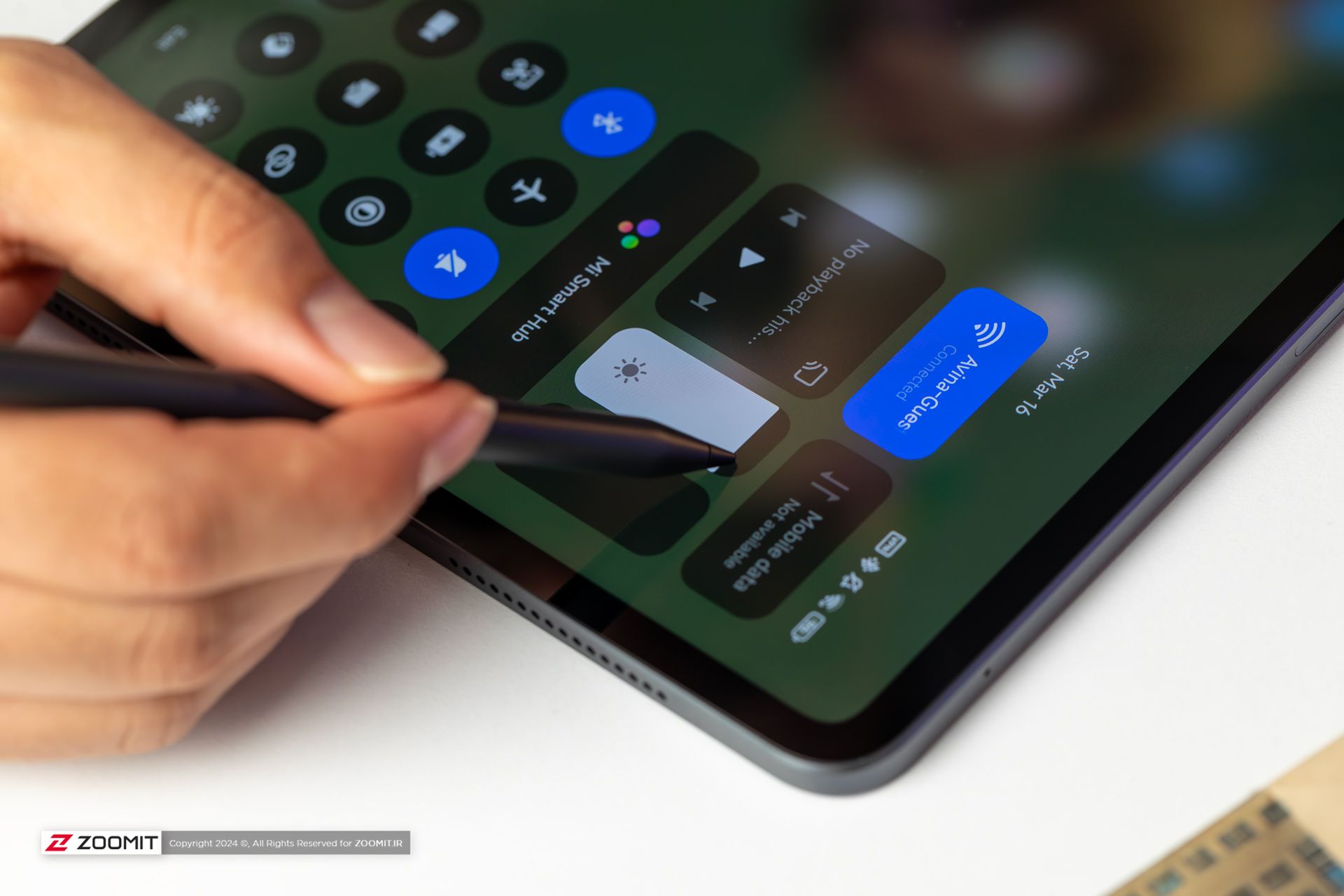
Of course, the IPS LCD screen and its similarity with the panel of competitors of the same price do not disappoint us, but maybe you also expect to see an OLED panel on a tablet with the specifications and of course the price of Pad 6S Pro.
The pixel density of 295 ppi is another strength of this display, but the best aspect ratio should still be given to the iPad Air. It seems that the 4:3 aspect ratio in Apple tablets provides users with the best possible mode for using a tablet. While the 3:2 aspect ratio on the Xiaomi Pad 6S Pro is much better than the weird 16:10 that many other tablets (including Samsung’s) use, it’s still a step down from iPads in terms of usability.
Read more: Motorola Edge 50 Pro review, technical specifications
|
Xiaomi Pad 6S Pro display performance against competitors |
|||||||
|---|---|---|---|---|---|---|---|
|
Product/Test |
Minimum brightness |
Maximum brightness |
contrast ratio |
sRGB |
DCI P3 |
||
|
manual Automatically |
local |
cover |
Average error |
cover |
Average error |
||
|
Xiaomi Pad 6S Pro |
5 |
547 780 (HDR) |
156 |
99.4 percent |
3.2 |
97.9 |
4.2 |
|
Galaxy Tab S9 Ultra |
2 |
502 910 (HDR) |
∞ |
100% (Original) |
1.8 |
130 percent (Vivid) |
3.4 |
|
Xiaomi Pad 6 Pro |
0.6 |
332 415 |
553 |
96.9 percent |
2.5 |
98.5 percent (Saturated) |
3.4 |
|
iPad Pro 12.9 2022 |
1.7 |
566 1532 (HDR) |
∞ |
100 percent |
1.8 |
— |
— |
|
iPad Pro 11 2022 |
2.40 |
509 518 |
706 |
100 percent |
2.3 |
— |
— |
|
Galaxy Tab S8 Ultra |
2.0 |
527 943 (HDR) |
∞ |
100 percent (Natural) |
3.1 |
100 percent (Vivid) |
5.4 |
As you can see in the table, contrary to Xiaomi’s claim of a maximum brightness of 900 nits, in Zoomit tests the maximum brightness of the Pad 6S Pro screen in HDR mode is about 780 nits. Although under normal conditions, screen brightness is not a problem, when playing video or working with the device under sunlight, this point should be considered.
On the other hand, the accuracy of the Xiaomi Pad 6S Pro screen should be considered one of the strengths of this tablet. The coverage of more than 99% of the sRGB color space and nearly 98% of the DCI-P3 color space and an error of less than 5% in both modes indicate the production of accurate colors in this display, which will be a positive point for those interested in watching video content.
Another noteworthy point about the display is the ability to adjust the temperature and brightness of the screen based on environmental conditions, which makes the tablet a suitable option for those interested in reading.
Despite the acceptable technical performance of the screen in Pad 6S Pro, it seems that the distance between the protective glass of the screen and the panel is a little high; For this reason, a little shadow can be seen on the edges of the page. If you have sharp eyes, such an issue may get on your nerves while working with a tablet.
Chip; The trump card of the Pad 6S Pro
Unlike Samsung, which has used the disappointing Exynos 1380 chipset for its representative in this price range, Xiaomi has gone to a more powerful competitor to challenge the iPad Air equipped with the M1 chipset. The SD 8 Gen 2 chip is the mastermind of the Xiaomi Pad 6S Pro, which can easily turn the Chinese tablet into a tool to accomplish any task with any level of complexity and technical power required.
|
Performance of Xiaomi Pad 6S Pro against competitors |
|||||
|---|---|---|---|---|---|
|
Product/benchmark |
chip |
Speedometer 2.0 |
GeekBench 6 |
GFXBench |
|
|
Web browsing experience |
GPU computing power |
CPU computing power |
Game simulator |
||
|
Vulkan/Metal |
Single/Multi |
Aztec Ruins Onscreen/1440p |
|||
|
Vulkan/Metal |
|||||
|
Xiaomi Pad 6S Pro |
Snapdragon 8 Gen 2 |
156 |
8667 |
1915 5254 |
41 65 |
|
Galaxy Tab S9 Ultra |
Snapdragon 8 Gen 2 |
193 |
9661 |
2022 5377 |
50 68 |
|
Pad 6 pro |
Snapdragon 8+ Gen 1 |
124 |
6999 |
1756 4433 |
34 47 |
|
iPad Pro 2022 |
Apple M2 |
373 |
45395 |
2527 9576 |
81 75 |
|
Galaxy Tab S8 Ultra |
Snapdragon 8 Gen 1 |
102 |
6887 |
1629 3663 |
28 37 |
|
iPad Pro 12.9 2021 |
Apple M1 |
212 |
— |
2400 7871 |
52.8 68.2 |
In terms of processing performance, Xiaomi Pad 6S Pro has recorded acceptable results as an Android tablet, but there are controversial points in the benchmark results of this tablet that cannot be simply ignored. First of all, the Xiaomi tablet’s chipset is a few steps below Apple’s M1. By comparing the numbers recorded by the Pad 6S Pro with the benchmark results of the iPad Pro 2021 (which uses the same M1 chip used in the iPad Air 2022), you can clearly see the difference in performance.
Unfortunately, Snapdragon 8 generation 2 still has a significant gap with Apple’s chipsets
Despite having the same chipset as a tablet like the Galaxy Tab S9 Ultra, the Xiaomi tablet cannot record the same results as the Samsung representative and is still ranked lower. For example, in the GPU computing power test, the Xiaomi Pad 6S Pro is about 10% weaker than the Galaxy Tab. This result is repeated in the CPU computing power test and the game simulation test (although with a smaller difference). Of course, it can be justified that the price of the Galaxy Tab S9 Ultra is 2 times higher than the price of the Xiaomi representative, and yet the difference of 10% is not such a big difference.
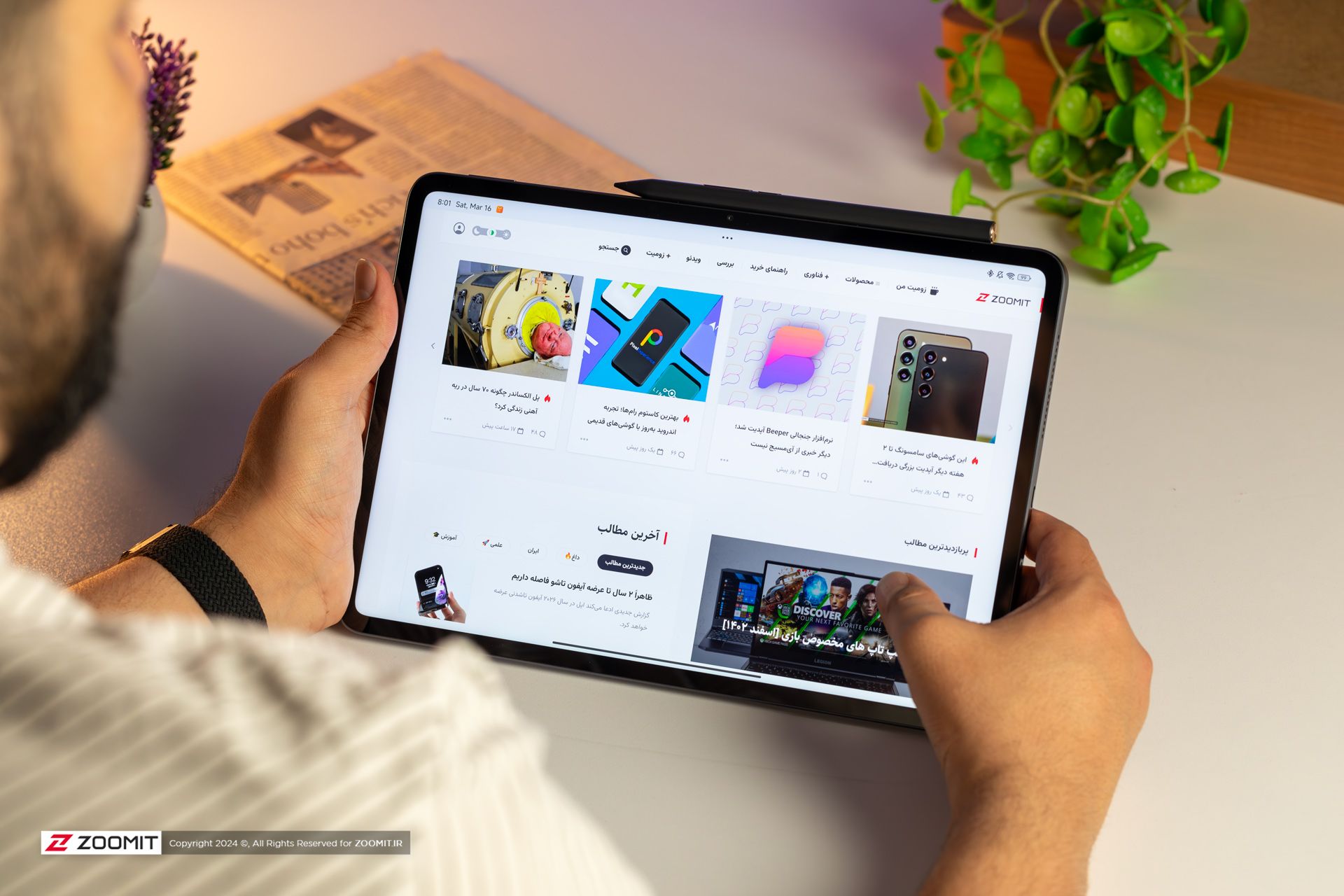
Aside from the benchmark results, one thing to note is that the Snapdragon 8 Gen 2 will handle almost anything, and there is probably no usage scenario that will cause the device’s chip to hang or feel weak.
The UFS 4.0 storage space makes the speed of reading and writing information no less than the best tablets on the market. The Pad 6S Pro in the basic configuration offers 8GB of RAM and 256GB of storage space, which was also available to Zoomit for review. In addition, except for this model, users will also be able to choose versions with 12 or 16 GB of RAM and 512 GB or 1 TB of storage space.
When we talk about the hardware power of the tablet, it is not bad to keep in mind that unlike Samsung and even Apple, Xiaomi’s user interface does not provide the user with special features for multitasking, and features such as the ability to open four windows at the same time. In Workstation mode, they do not put any special pressure on the device. With this account, it can be said that the processing power of SD 8 Gen 2 for Xiaomi tablet is considered “Overkill” to some extent.
HyperOS experience; Repetitive and not very useful
Perhaps the main distinguishing feature of tablets should be found in their user interface and user experience. After the retirement of MIUI, Xiaomi has tried to design its new user interface, Hyper OS, simpler and lighter and provide as many features as possible to users. Among the features of HyperOS in Xiaomi Pad 6S Pro is a special video conference mode (using artificial intelligence to remove microphone noise), a very powerful file management system (File Manager), which Xiaomi considers to be on par with the file management system of laptops, the possibility of using He mentioned the tablet as a second screen for photography and video cameras and of course a new feature called Interconnectivity.
With Interconnectivity, Xiaomi wants to evoke the ecosystem of Apple and Samsung for users
Interconnectivity is actually Xiaomi’s attempt to create integration between the company’s products and provide conditions such as perfect coordination of iOS and iPad, in order to create a platform similar to what Apple provides to its users for Xiaomi fans.
The Interconnectivity feature is created by a Xiaomi user account between different devices and features such as a central hub for controlling smart home appliances, the possibility of Drag&Drop files between different devices, the ability to convert the main phone camera into a tablet selfie camera in video calls, or work with the phone. It makes it available to users through tablets.

After creating a Xiaomi account (or logging in) and issuing the necessary access to Interconnectivity, in the quick settings section of the tablet, you will have a new option called Mi Smart Hub through which you can access all other devices that support this feature. View and control.
For example, let’s say you have connected your tablet and phone through Interconnectivity. Here you can use the phone as an independent and external camera and take photos or videos through the tablet. If you’ve ever tried to record a video for YouTube or Instagram on your own, you know how much of a hassle it can be to adjust the frame, focus, brightness, and sidelights. But now with a tablet and a Xiaomi phone that support Interconnectivity, you can easily have your own personal studio!

The next interesting feature is the ability to type or navigate the phone through the tablet. If for some reason you intend to draw a shape on your phone, you can do it on the larger screen of the tablet with the help of a dedicated pen, which undoubtedly provides more precision and control. In such a case, applying changes at high speed and without slowness or lag is a very important point that Interconnectivity provides you.
Apart from these cases, Xiaomi has tried to add a feature similar to Airdrop to its devices. This feature, called Mi Share, works exactly like Airdrop in Apple products, and you can use it to transfer files between different Xiaomi devices. Of course, this feature seems to be compatible with other Android devices as well, but at least in our tests, it was not possible to transfer files from tablets to Samsung phones, which may be due to the presence of Chinese ROM, or a software bug that can be solved in the future.
Along with the Pad 6S Pro, a keyboard and a special pen called the Xiaomi Pad 6S Pro Cover and Xiaomi Focus Pen have also been introduced to increase the productivity aspect of the tablet. The pen is magnetically connected to the Xiaomi Pad 6S Pro and is charged in this way. With the support of a 240 Hz touch sampling rate and 4096 pressure levels, this pen is considered a very good option for designers. The interesting thing is that the focus pen of the Xiaomi stylus is very similar to the Apple Pencil and, like the overall design of the 6S Pro pad, it was directly inspired by Apple.

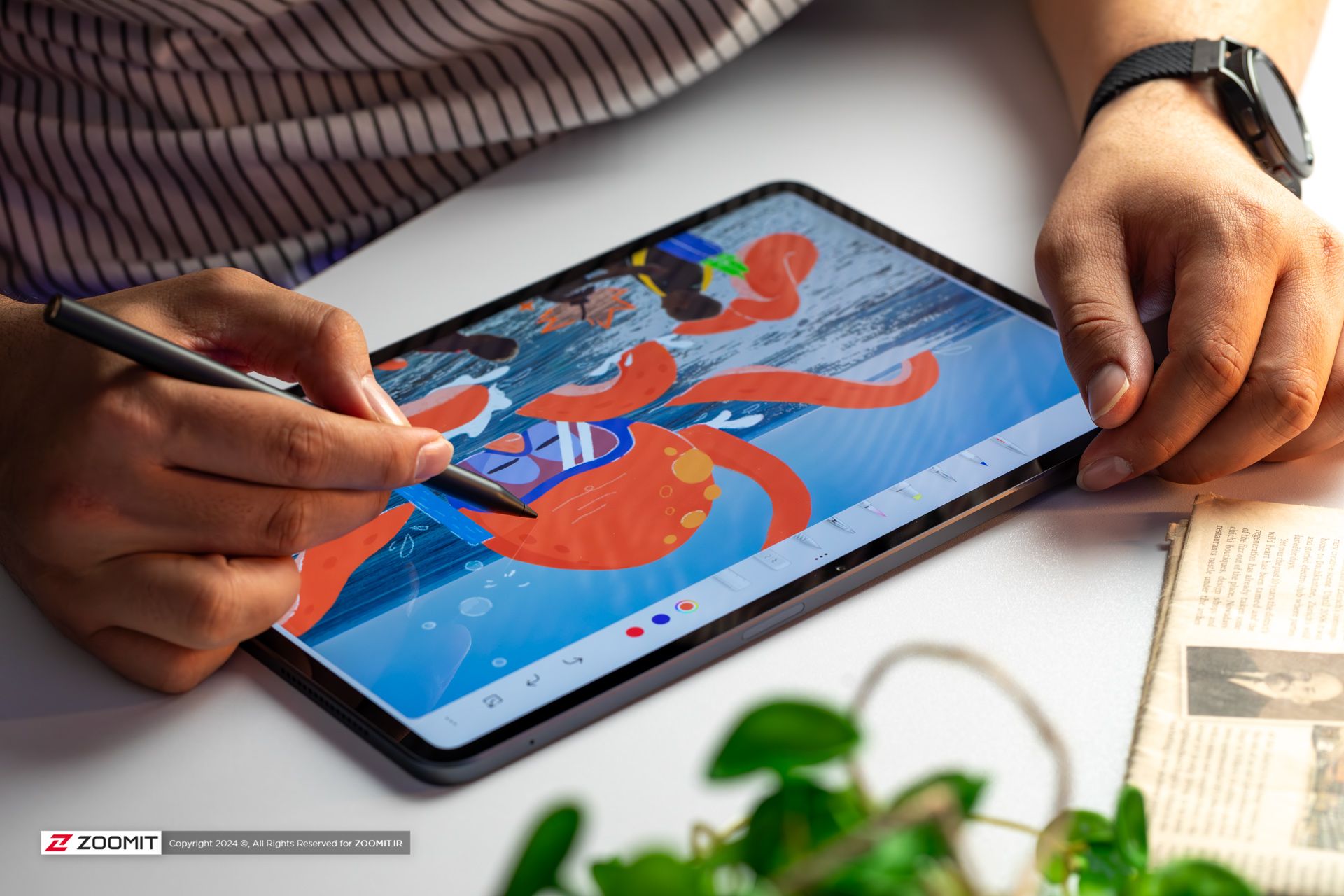
The keyboard is connected to the tablet through the pins on the back of the device and simultaneously plays the role of the cover. Of course, it seems that this keyboard was designed for the Chinese market, and some software limitations (such as not being able to set the Farsi language for typing) can be seen in it. A trackpad is not considered for this keyboard, which seems a bit strange, but as a means to get rid of the virtual and touch keyboard of the tablet, it will be a logical option.
The camera set is quite adequate
Although probably no one expects photography from tablets, Xiaomi offers a camera with a 50-megapixel sensor for necessary occasions. The maximum aperture of this camera is f/1.8 and the dimensions of its sensor are 1/2.76 inches. With this camera, you can easily scan documents, or if you are in a business meeting or classroom, take a quick picture of the board and the information written on it. The quality of the images in this condition is quite acceptable and no particular fault can be found in them.
Another 2-megapixel camera is intended to help detect depth, which is not particularly useful in normal photography. The possibility of recording videos with 4K or 1080p resolution at a maximum rate of 60 frames per second is also available to users by the main camera.
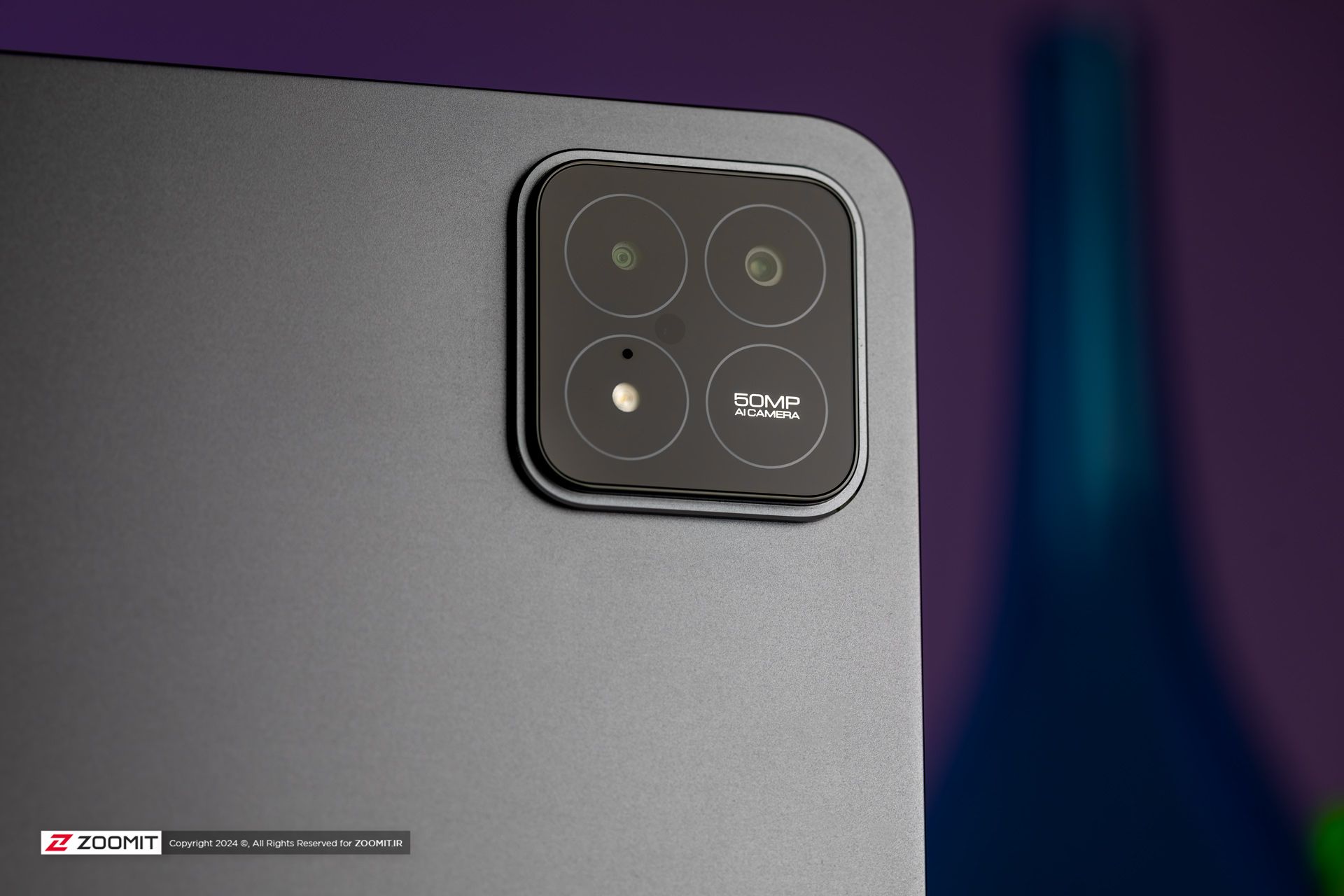
Attending video conferences is one of the main uses of tablets. For better video quality in video calls, Xiaomi Pad 6S Pro uses a 32-megapixel selfie camera. This camera is placed on the vertical edge (when you hold the tablet in portrait mode), which is the best way to use it in video conferences.
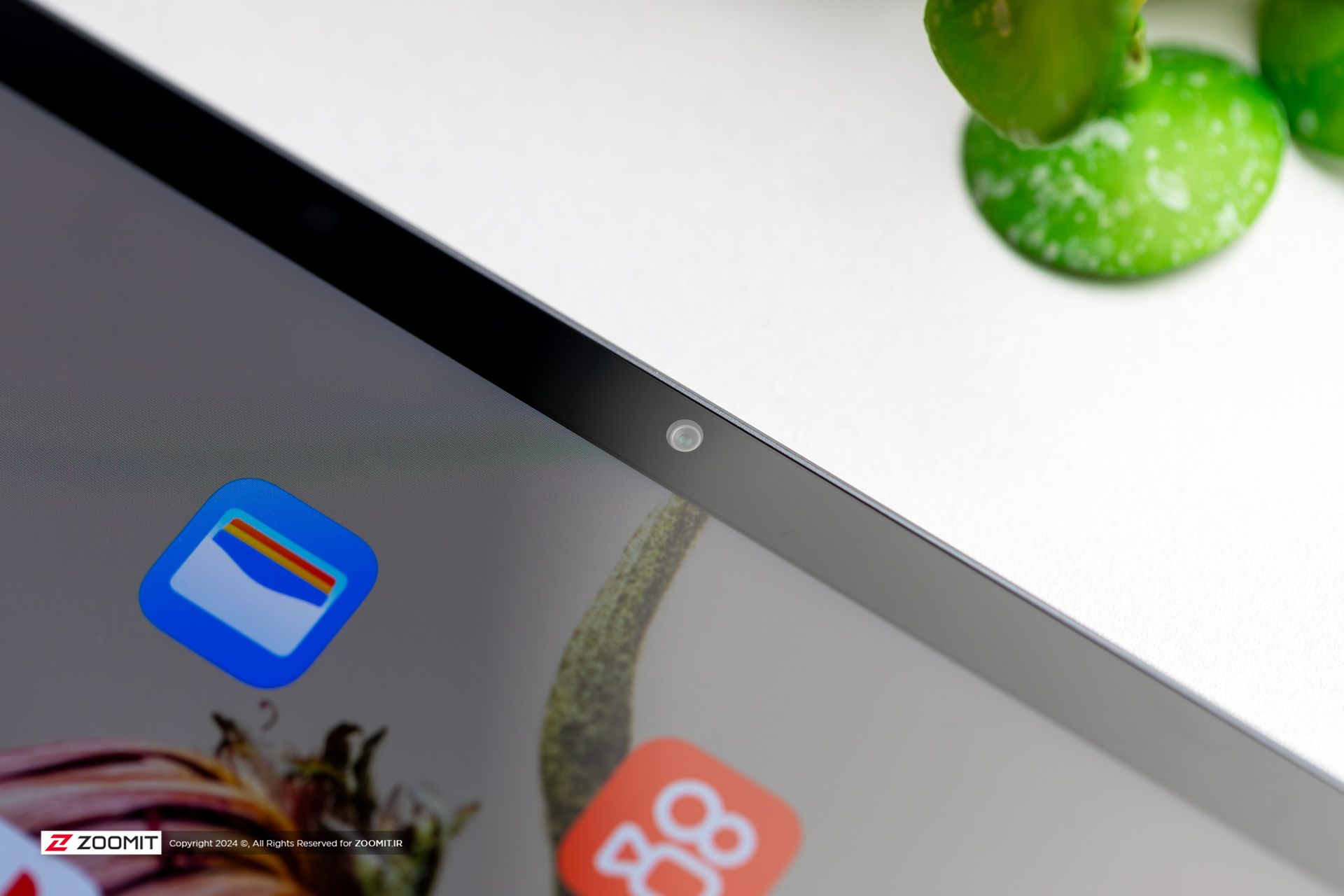
The selfie camera also uses the Focus Frame feature, which, similar to the Center Stage feature on Apple tablets, keeps the subject always in the center of the frame when using the front camera.
Large battery with reliable charging
Xiaomi has used a giant battery with a capacity of 10,000 mAh in the Pad 6S Pro, which is a leader in its kind and compared to competitors. It is worth noting that the battery used in the iPad Air 2022 has a capacity of 7600 mAh, and the Samsung Galaxy Tab S9 FE uses a battery with a capacity of 8000 mAh. Meanwhile, while the Samsung tablet supports 45W fast charging, the Xiaomi Pad 6S Pro can be charged with a 120W adapter, which, according to Xiaomi, charges the tablet from zero to 100% in just 35 minutes. Thanks to the use of Quick Charge 4.0 technology, you will only need 10 minutes to charge the tablet from zero to 45%.
|
Battery life of Xiaomi Pad 6S Pro against competitors |
||||
|---|---|---|---|---|
|
Product/benchmark |
Display |
battery |
Play video |
Everyday use |
|
Dimensions, resolution, and refresh rate |
milliampere hour |
minute: hour |
minute: hour |
|
|
Xiaomi Pad 6S Pro |
12.4 inches, 144 Hz 2032×3048 md; sg |
10000 |
17:00 |
8:25 |
|
Galaxy Tab S9 Ultra |
14.6 inches, 120 Hz 2960×1848 pixels |
11200 |
17:00 |
— |
|
Pad 6 pro |
11 inches, 144 Hz 2880 x 1800 pixels |
8600 |
12:30 |
7:18 |
|
iPad Pro 2022 |
11 inches, 120 Hz 1668 x 2388 pixels |
7812 |
10:07 |
— |
|
Galaxy Tab S8 Ultra |
14.6 inches, 120 Hz 2960×1848 pixels |
11200 |
16:50 |
7:30 |
In Zomit’s daily user test, Pad 6S Pro was able to record a charging time of about 8.5 hours, which is not a bad number considering the LCD display. We also obtained 17 hours of device performance in the video playback test. In general, and according to the results of the tests, we have to classify the charging of the 6S Pro pad as one of its strengths.

However, Xiaomi has a very long and difficult road ahead of it. Even in the Android world, there are exciting features like Samsung Dex that can attract more users, and cross-device integration shouldn’t just be limited to flagship phones and tablets. If Xiaomi can draw a clear vision in this direction and show that it is determined to achieve it, it will meet with more favor from users.


Talk of Metaverse technology has been muted in recent months, but Meta CEO Mark Zuckerberg changed that with an Instagram post that could have a significant impact on the development of the best VR headsets and accelerate the pace of Metaverse.
Metaverse is back
The big news is that Meta will open-source the mixed reality operating system it developed for the Quest 3 headset and previous Quest VR headsets to expand the ecosystem with new partners.
Meta built what is now known as Horizon OS with the Android Open Source Project, and now an optimized XR version of Meta will be available for other manufacturers to use on their hardware.
Few details have been shared, but Meta’s blog says that Asus ROG is working on a gaming headset, Lenovo will develop one, and Meta is working with Microsoft on a limited-edition Xbox-inspired Quest. ) cooperates.
Other companies may build devices for specific uses, such as productivity, fitness, watching video, or playing 2D games on a large virtual screen, Zuckerberg said. A dedicated virtual reality headset designed for simulation can start working with Horizon OS.
Read more: AI PC; revolutionary technology of the future?
As part of this change, Meta is updating its Quest app store, which will become the Horizon Store. Anyone running Meta Horizon OS can see compatible apps in the Horizon Store, and more content is on the way.
In addition to the games, apps, and Meta Quest content available, the Horizon Store also features Xbox Cloud Gaming and Steam games. Meta’s App Lab software is being upgraded, so games and apps that are in the early stages of development will be more discoverable.
Zuckerberg once again mentioned Meta’s desire to add the Google Play Store to Horizon OS and thus the Quest platform. Some Android apps can be run on Quest 3, Quest 2, and Quest Pro by sideloading them.
Meta wants to be an open-source alternative to Apple’s Vision Pro augmented reality glasses and become the “Android” version of XR headsets. Google is working with Samsung on similar programs, and the official Android XR operating system is coming soon.
Whether you like the concept or not, things are heating up again in the Metaverse, and Meta wants to be at the forefront of developing these new platforms.


Samsung Galaxy A55 vs Galaxy A35


Can humans endure the psychological torment of living on Mars?


Xiaomi Pad 6S Pro review


Metaverse is back


AI PC; revolutionary technology of the future?


Android 15 features: Everything you need to know 2024 update


One UI 6.1 user interface review; The most complete Android skin


Review of Xiaomi 14 Ultra, price and specifications


Climate change slows down the rotation of the earth!


What would happen if gravity stopped?
Popular
-



 Technology9 months ago
Technology9 months agoWho has checked our Whatsapp profile viewed my Whatsapp August 2023
-



 Technology10 months ago
Technology10 months agoHow to use ChatGPT on Android and iOS
-



 Technology9 months ago
Technology9 months agoSecond WhatsApp , how to install and download dual WhatsApp August 2023
-



 Technology10 months ago
Technology10 months agoThe best Android tablets 2023, buying guide
-



 Humans1 year ago
Humans1 year agoCell Rover analyzes the inside of cells without destroying them
-



 AI1 year ago
AI1 year agoUber replaces human drivers with robots
-



 Technology10 months ago
Technology10 months agoThe best photography cameras 2023, buying guide and price
-



 Technology10 months ago
Technology10 months agoHow to prevent automatic download of applications on Samsung phones







